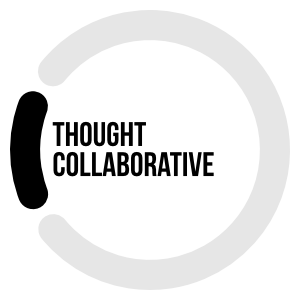How to answer design interview questions
Have you been in an interview where you think it is going well, until you're sent in a mental frenzy from an interviewing prompt: "Give us an example of how you have demonstrated conflict resolution with a challenging stakeholder."
Some examples come to mind but you're not sure what parts are important to share. Or perhaps, you have so many examples that you don't know what to choose.
These types of story-led questions and prompts are called behavioural based interviewing. It's important to get comfortable with them as they're the industry standard for design interview processes. The technique to answering them comes in a framework that's quite easy to learn. Below you will find some insights into what this type of interviewing is and how to prepare for these types of interview questions.
Firstly, what is Behavioural Interviewing?
Behavioural interviewing, sometimes also called experience-based or patterned behavioural interviewing focuses on a candidate’s past projects. The premise of the interview technique is that past behaviour will indicate future behaviour. The interview process involves asking the candidate to provide examples of how they have demonstrated specific behaviours, knowledge, skills and abilities. This type of interviewing can reveal a candidate’s actual level of experience and their potential to handle situations that may arise in the interviewing organisation.
During a behavioural interview, the interviewer is usually rating the responses to questions on a pre-determined rating scale of criteria so they can compare candidates. The interviewer is essentially looking for evidence that you have successfully carried out or handled a situation before and that you're capable of doing it again. In order to stand out and answer the prompts to the best of your ability it can help to you use a simple framework: the STAR (Situation, Task, Action, Result) framework. Using this technique can be a determining factor in your interview. It has been recorded that there are improvements of 50% and higher in interviews for candidates who use the STAR technique during interviews vs those candidates who don't us it.
The STAR Framework
The STAR framework is an acronym: Situation, Task, Action, Result. Each of these letters acts as a prompt for the different parts of a story in a past project. Below each step of the acronym is described in detail, followed by some examples later in this article. Try to describe your experience holistically and clearly, remembering that the person who is interviewing you hasn't been in that situation themselves. It is helpful to include positive reflections on your character and speak honestly. This is a situation where you should speak from your perspective, using phrases such as: 'I did', ‘I experienced’, etc.
Situation
Describe a time you had an experience of the question or prompt requested.
Give some specific context around this. What was your job title at the time? What was the team size and the roles of the people you were working with? Why did this situation arise? Were there any obstacles or challenges?
Task
Outline the job or situation you faced. What was required of you? What were the expectations of others and of yourself? Think of this as a type of hypothesis for the project.
Action
This will be the most detailed part of your answer. If we were to reference the Double Diamond, in this part you would provide an overview of the Discover, Define and Develop phases while only touching on the Deliver phase. Speak to your research group and archetypes. How did you ideate? Were there any initial prototypes that were tested? Think about your point of view (POV) during these phases: How did your POV changed during the discovery phase? How did your POV change during the validation phase?
The action part of your answer should leave your interviewer with no doubt as to what it was that you did. If you are showing a portfolio case study, this is where you show them evidence of how and why you carried out this work with artefacts.
Result
This is the punchy end to tie up your example. At this point you will summarise what the result of the project was and reflect on any positives or learnings. Here you are touching on the Deliver phase of the Double Diamond and speaking to the impact of the project. What impact did your work have? Did it achieve the business objective in the brief? Be sure to share if you have feedback, statistical evidence or this led onto a new project.
When to use the STAR Framework
Going into an interview, you should have an example of the STAR framework prepared for each of the Key Selection Criteria. These criteria points are in the requirement section of a job description or job advertisement. You'll generally be rated on these according to your capabilities, so, if you can confidently explain a situation where you've demonstrated them all - great! If you can’t think of an experience for one of the criteria points, be sure to research a case studies for the situation. You can be honest and explain what you've learned from looking into a case study on the subject, this will demonstrate your interest in learning and improving your skills.
You will know when to use the STAR framework if a prompt or question is asking you to look back on an experience. This might sound like:
Tell us about a time where you...
Describe a situation when you...
Give an example of...
The interviewer might follow up these questions or zoom into a part of your story with further prompts such as:
Can you tell me more about how you collaborated with the team?
What was your role in this?
What other challenges did you face? How did you handle these?
How to prepare before the interview:
Learn the Key Selection Criteria of the role, if it's not in the job description, it should be provided to you prior to the interview. This may include criteria such as, 'must be able to work to tight deadlines', or 'has experience in managing multiple stakeholders in delivery'. Next, begin building answers about your previous workplace experiences with the STAR framework as your base. This should provide you with one project, case study or example for each Key Selection Criteria point. When practicing, make a list of all the questions that could potentially be asked around those criteria. For example. "Tell us a time in which you had to work to a tight deadline? How did you handle this?" and "Can you give me an example of when you had to manage multiple stakeholders in your role?"
You're ready to give them tangible answers with confidence!
Examples of the STAR framework in action with common interview questions:
Below are some common behavioural based interview questions and prompts asked of designers and our thoughts on how you can best respond.
Question:
Describe a time in which you were in a stressful work situation and how you handled it.
The Aim in your response:
Prove that you can handle stressful situations
Demonstrate how you problem solve in situations
Articulate your thought process around a situation
Example Response.
The situation was when I was working in the delivery team at Optus. It was a fast paced environment with delivery required every two weeks for our sprints.
I was tasked with designing the new login screens for our customer app login. Everything was going well, I'd done my research and user testing and had created the designs to both a low fidelity and high fidelity prototype. The day before I was due to present the designs to the wider team, my work computer crashed. All my files were lost, two weeks of hard work gone.
The action I took was to remain calm, seek assistance and evaluate how quickly I could redo the work. Firstly, I took my computer to IT with hopes they could restore my hard drive. While waiting, I checked our share server for the last versions of the saved files and weighed up my options. I could stay back late and recreate the high fidelity prototypes again from previous sketches. I could also tell the team that I would need more time, but this would disrupt sprint and would be worst case scenario. Luckily IT were able to restore my files, so it was a crisis averted.
The result of this event was that I now back up my digital work externally, on a shared server and hard drive after every work day to ensure that this never happens again.
Question:
What was the last thing you were inspired by?
The Aim in your response:
To demonstrate what type of content/products you are active in and interested by
To show what you are interested in learning
To demonstrate that you care about your work
To let them know you are keeping up design trends and innovation
Example Response.
A situation when I was last inspired was when I downloaded the app Tiktok.
The task as with any new app, was to learn how to use it and decipher if it has a place on my device.
In action, I found the onboarding experience incredibly smooth and intuitive. I was able to easily navigate through the app and the visual design was incredibly sleek. I wondered what I could learn from their design and experience.
It resulted in me utilising the Tiktok app on a personal and professionally level. I was able to do further research on their designs and take inspiration to use in my own work.
Other common questions:
Tell me about the project that you’re most proud of and why.
Can you give an example of how you have demonstrated conflict resolution with a challenging stakeholder?
Tell us about a project that demonstrates your design process
Tell us about your most and least successful design process
Can you give an example of when you needed to collaborate with developers / other designers?
Tell me about a situation that demonstrates your strength in scoping and planning
Have you supported building a design system before?
Preparing for portfolio review interviews
There are many formats and methods to present a portfolio. Website, PDF document or Behance profiles are the most common channels in the Australian market. We recommend having a website to show the breadth of your work and for ease of access. A minimum of 3 end to end case studies that tell the story of a project with high fidelity artefacts is the industry design standard. When preparing for the interview, when presenting a PDF or saved file portfolio, you may want to tailor it to the job requirements and the organisation you're interviewing for. If you have an online portfolio, you should have in mind what pages and examples you'll want to draw the interviewers attention to. When presenting your work, the STAR framework is a fantastic tool for explaining a case study.
In summary
Behavioural based interviewing is the industry standard interview method and is best responded to using the STAR framework as a base. Preparation is key to setting yourself up for success in this situation. Take a look at the role's Key Selection Criteria, think about questions which may come up and practise responding to them.

